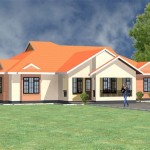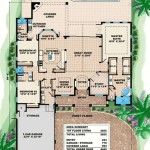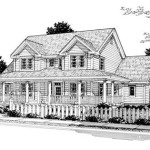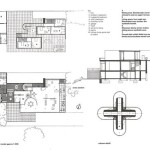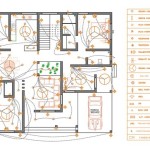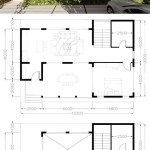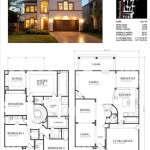Plans of a Tudor House
Tudor architecture, a distinctive style prevalent in England from the late 15th to the early 17th century, exhibits unique characteristics reflected in house plans of the era. Understanding these plans provides insights into the lives and social structures of Tudor England. Several key features define Tudor house plans, ranging from the overall layout to specific architectural elements.
One of the most recognizable elements of a Tudor house is the timber framing, often exposed on the exterior walls. This half-timbering, with its intricate patterns of dark wood beams against lighter infill, heavily influenced the layout and construction of the house. The timber frame dictated the spacing and size of rooms, as well as the overall shape of the building. Early Tudor homes were often simpler structures, evolving from medieval hall houses. Later Tudor houses, particularly those belonging to the wealthy, became more elaborate and complex.
The great hall remained a central feature in many Tudor house plans. This large, multi-purpose space served as the primary living area, dining area, and often a place for entertaining guests. It was typically located on the ground floor and extended upwards through one or more stories, creating a dramatic open space. The hall often featured a large fireplace, essential for warmth and cooking, and prominent windows to provide light.
As Tudor society developed, so did the need for privacy and specialized rooms. The great hall gradually declined in importance as separate dining rooms, parlors, and private chambers became more common. These rooms were often arranged around the hall or in separate wings, reflecting the growing complexity of household organization. Service areas, such as kitchens, pantries, and butteries, were also incorporated into the plan, usually located near the hall for convenient access.
The characteristic steeply pitched roofs of Tudor houses are another defining feature reflected in the plans. These roofs, often covered with thatch or slate, created substantial attic spaces that could be utilized for storage or additional living quarters. Gables, the triangular portions of the wall at the end of a pitched roof, were often decorated with ornate bargeboards, adding to the distinctive Tudor aesthetic.
Chimneys, a prominent feature of Tudor houses, were carefully integrated into the plans. The placement of chimneys dictated the location of fireplaces within the house, influencing the arrangement of rooms and the overall flow of the house. Large, elaborately decorated chimney stacks became a symbol of wealth and status, further shaping the external appearance of the house.
Windows played a significant role in Tudor house plans. The use of leaded glass in casement windows, often arranged in groups of multiple panes, became increasingly common. Larger windows, particularly bay windows, were incorporated into the design, allowing more natural light into the rooms and offering views of the surrounding landscape. The placement and size of windows were carefully considered in the planning process, impacting both the interior and exterior appearance of the house.
Staircases, often constructed of wood, also became an important architectural element in Tudor houses. As the need for private upper chambers increased, staircases evolved from simple ladders to more elaborate structures. They were often positioned prominently within the house, sometimes within the great hall or in a dedicated stairwell. The design and placement of the staircase contributed to the overall flow and organization of the house.
Exterior features, such as porches, courtyards, and gardens, were often integrated into Tudor house plans. Porches provided sheltered entrances, while courtyards offered private outdoor spaces. Gardens, both for practical use and aesthetic pleasure, were an integral part of the Tudor household. These exterior elements demonstrate the connection between the house and its surroundings.
Studying Tudor house plans reveals the evolution of domestic architecture and provides valuable insights into the social and economic conditions of the time. From the prominence of the great hall in early Tudor homes to the increasing emphasis on privacy and specialized rooms in later houses, these plans reflect changing lifestyles and priorities. The incorporation of architectural features like timber framing, steeply pitched roofs, and prominent chimneys further distinguishes Tudor architecture and contributes to its enduring appeal.
Variations existed within Tudor architectural styles, influenced by regional differences, available materials, and the wealth of the homeowner. Analyzing these variations provides a deeper understanding of the diverse expressions of Tudor architecture and the factors that shaped its development.

This Is So Perfect Super Attractive Has A Library Though I Probably Won T Be Needing The Servant Tudor House Plans Vintage Cottage

Seattle Homes Tudor Style House Plan Design No 132 1908 Western Home Builder Victor W Voorhees

House Plan 90348 Tudor Style With 2088 Sq Ft 3 Bed 2 Bath 1

English Country Style Tudor House Plans With 4 Bedrooms

Tudor Style Model House And Floor Plan Art Print Com Craftsman Plans Vintage Dream Exterior

1920 National Plan Service Tudor House Vintage Plans Floor

T 601 Lower Floor Plan For Tudor Style House By Creativehouseplans Com

Tudor Style House Plans Floor

Tudor Style House Plan 4 Beds 3 Baths 3835 Sq Ft 1079 Dreamhomesource Com

Plan 020h 0238 The House

